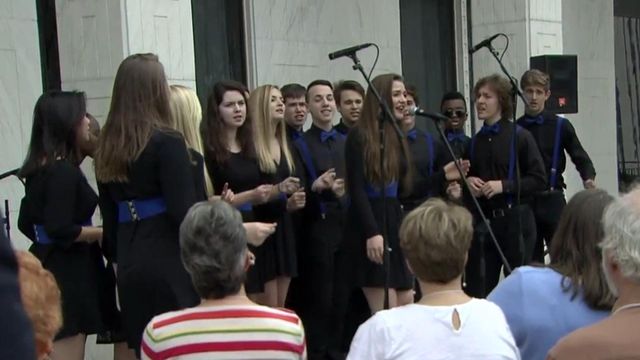Class size dilemma forcing year-round school to adjust
At least one year-round school in Wake County is shifting students among its four tracks to meet the requirements of a state budget provision that many lawmakers have been trying to fix.
Posted — UpdatedTurner Creek Elementary School Principal Lisa Spalding notified families of students that a lottery will be held in the coming days to figure out who goes where as the school scrambles to balance classes in each track as part of a mandate to reduce class sizes in kindergarten through the third grade.
"While we realize changing tracks is not ideal, in order to comply with the new state laws, we are left with no other options," Spalding wrote in an email.
School districts have traditionally had some flexibility to make their average class size slightly larger than the size state officials use to calculate how many teachers to fund for each district. Local school officials have used that flexibility to create and pay for teaching positions in non-core areas, such as physical education, music, art and languages, and to help delay the need to build new classrooms when enrollment is higher than expected.
But the 2016-17 state budget requires all teachers funded by state allotment to teach in core areas, starting in the 2017-18 school year, and puts a hard cap on K-3 class sizes, which could require most districts to add classrooms – either through mobile units, new construction or repurposing gymnasiums and other areas.
Lawmakers said those impacts were unintended consequences of trying to get smaller classes in earlier grades, and the House last month passed a bill that would reinstate some of the traditional flexibility.
The bill has been stalled in the Senate – the changes could get rolled into the 2017-18 state budget – which has prompted anxiety among teachers and parents worried about losing arts and language classes next year.
"I think it is important to have smaller classes. However, I do not think it is acceptable at all to be cutting arts programs," said Wake County student Sarah Katz
Katz said her middle school’s theater program saved her from bullying.
"Being in the school musical and being with the cast of the school musical was really helpful in dealing with the experience," she said.
"Having two kids in Wake County schools, I really don’t want these programs cut because it means so much to them and to have the community at the school that they identify with," agreed her mother, Catherine Katz.
The Wake County Public School System would have to hire another 460 teachers and build 400 classrooms to accommodate the demand for smaller elementary school classes, according to one estimate, and Catherine Katz said many schools are too crowded already to do that.
"If you decrease them in first grade, second grade, if you add those five classrooms, where are they going?" she asked. "It's not hard to go in and do the math in your head, to go in and see there’s no room."
• Credits
Copyright 2024 by Capitol Broadcasting Company. All rights reserved. This material may not be published, broadcast, rewritten or redistributed.






